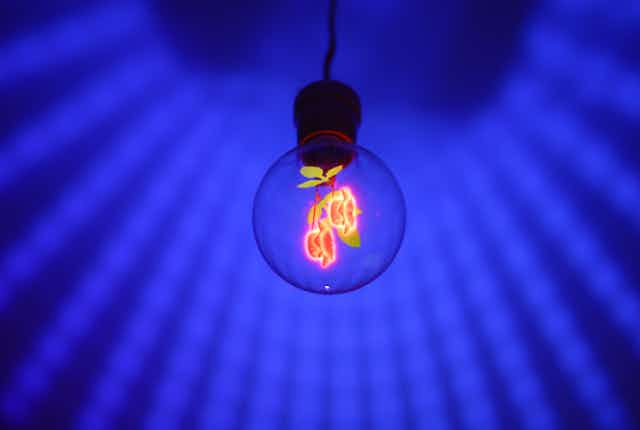The hobbyists who conduct biology in their garage are not a threat to society, according to a recent report published by the Woodrow Wilson International Center for Scholars. They aren’t developing a new pandemic or biological weapons. On the contrary, the authors recognise that do-it-yourself-biology (DIYbio) activities have potential to benefit society and recommend governments should contribute to the funding of community labs to help foster the movement. What came as a surprise from the Wilson Center survey was that almost a third of these biology hobbyists have a full-time position in a government-funded or privately-owned research institute, most of whom hold a PhD.
Catching up with electronics and computer science, biological parts and tools have become increasingly accessible in the past years, allowing the public to participate in what is a growing citizen science movement. In line with the open-source movement, the majority of DIY biologists work in a communal space, sharing infrastructure and protocols in a way that was inspired by the hackerspace and fablab movement. Using cheap components and inventive approaches, people have turned webcams into microscopes and made DNA amplifying technology available for a fraction of the price of commercial instruments.
In a recent piece commenting on the Wilson Center report, the editors of the top journal Nature rightly suggested that misconceptions about the movement would probably lead to missed opportunities. Unfortunately, they failed to come to the right conclusions regarding the future of DIY biology. While the authors of the report concluded on a positive tone, Nature’s editors seem to be sceptical about the relevance of amateur science and call for tighter governmental supervision.
Two factors may explain the academic community’s reserved attitude towards DIY biology.
First, the lack of a clear and unified goal is interpreted as a weakness of the DIYbio movement. But I believe this is an invaluable strength that reflects the diverstiy among the pratictioners’ and their aspirations.
In contrast to academia or industry where knowledge and the market are the main driving forces, DIY biologists’ motivations are broad – entrepreneurs are looking for low-cost and open technologies, artists for new sources of inspiration and materials, scientists for a laid-back creative environment and enthusiasts simply for accessible instrumentation and expertise to satisfy their curiosity. The latter are given an opportunity that few traditional institutions provide, making biological research accessible to the lay public. Even though the mission of DIYbio communities is hard to define without a case-by-case analysis, their potential to benefit society should not be in doubt.
Second, the academic community is probably misled by the assumption that what applies to research in an institution should be relevant to citizen science. Funding agencies have reliable but often conservative protocols to determine how to best distribute resources to academic projects. Although the value of basic research is widely recognised, the increase in competition strengthens the need for scientists to justify their interests and emphasise the potential impact of their anticipated findings.
Citizen science often explores topics that may seem to have limited scientific importance. But they are of interest to the public, calling for solutions that can be easily implemented by anyone. Governments and other funders should be supporting the DIYbio community in its attempt to foster low-cost innovation and bring biology to society. Their control beyond a strictly legal and ethical concern would certainly kill DIYbio’s most valuable feature: spontaneous creativity.
An attractive alternative
This intellectual freedom is only of the several features that make DIY biology attractive, especially to scientists who were trained in a traditional environment. The current generation has embraced the open access revolution – paywalls, patents and copyrights are often considered soon to be obsolete in a world where knowledge is increasingly seen as a common good that should come cheap, fairly distributed and readily accessible.
There is also growing dissatisfaction within academia and industry. Both environments used to provide intellectual stimulation and employment stability for ambitious people. But in recent years many examples have suggested that these institutions are not the hallowed halls they used to be. For some, accepting this uncertain future without the prospect of a stimulating work environment with room for personal initiative may not be gratifying enough anymore.
The real DIY dilemma
The Wilson Center report shed light on the limited risks to society of the DIYbio movement. They concluded that the community has been working with ethical and safety norms since the beginning, paying attention to local regulations in order to anticipate the concerns and criticism of the public. Nature’s editorial titled “The DIY dilemma” discarded old misconceptions but replaced them with new ones.
The assumption that government funds will provide security and stability to the DIYbio ecosystem is probably wrong considering current budget cuts. And asking for a compromise in exchange for these funds is certainly bound to cause more harm than good. A mixed financial model with support from sources promoting different initiatives (entrepreneurship, basic research, art and education) is more likely to provide sustained activities and versatility.
So where is the real dilemma? It probably lies within the DIYbio community, where people are struggling to find a way to solve their image problem and explain why most security questions currently debated are irrelevant to their activities. If they choose not to reply directly to the scientific community, they should instead prove their legitimacy through their citizen science work.

